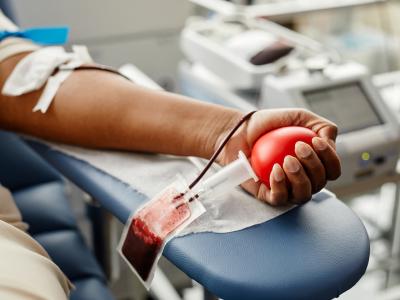A study today by researchers in Tennessee has found that fewer than 2% of providers in the state were responsible for nearly a quarter of pediatric outpatient antibiotic prescriptions in 2016.
The study, published in Infection Control and Hospital Epidemiology, is the second by a team of researchers with Vanderbilt University Medical Center, the Tennessee Department of Health, and the Tennessee Valley Healthcare System to drill down into the state's outpatient prescribing data to identify high prescribers. Their earlier study, published in November 2019 in the same journal, found that 50% of the state's total outpatient antibiotic prescriptions in 2016 were written by less than 10% of providers.
Together, these studies may provide some insight into why Tennessee is ranked by the Centers for Disease Control and Prevention (CDC) as the sixth highest in outpatient antibiotic prescribing. Corresponding author Sophie Katz, MD, MPH, says that while she and her colleagues are well aware that the state, and southeastern states in general, are known for high antibiotic prescribing rates, they were surprised by the result of the studies.
"We didn't expect it to be such a small group of providers contributing to such a high volume of prescriptions," said Katz, an associate director of pediatric stewardship at Vanderbilt's Monroe Carell Jr. Children's Hospital.
Characteristic associated with high prescribing
In the cross-sectional study, Katz and her colleagues analyzed data from a national prescription drug database, focusing on patients under the age of 20 who had filled an antibiotic prescription at an outpatient pharmacy in Tennessee in 2016. They also looked at several patient and provider characteristics, including the patients' age, the county where the prescription was filled, the provider type, and how long the providers had been in practice. The study did not analyze whether the prescriptions were appropriate.
"The aim was to figure out what kinds of characteristics are associated with high prescribers, and how we can use that information for opportunities to make improvements in the state," Katz said.
Overall, they found that 1,940,011 antibiotic prescriptions were written for Tennessee children in 2016, for an average of 1,165 prescriptions per 1,000 people—a rate 50% higher than the national pediatric antibiotic prescribing rate. Twenty-five percent of the prescriptions were for broad-spectrum antibiotics. Amoxicillin (34%) and azithromycin (15%) were the most commonly prescribed antibiotics.
Analysis of patient characteristics that might influence prescribing showed that the prescribing rates varied by age, but were highest among children ages 0 to 2, with 20% of pediatric prescriptions written for this group. Mean antibiotic prescribing rates varied greatly by the county where the prescription was, ranging from 39 to 2,482 prescriptions per 1,000 people.
When they looked at provider characteristics, they found that 54% of the prescriptions were written by physicians, of which 56% were written by general pediatricians. But most interesting was the fact that, of the 21,798 providers in the data set, only 360 (1.7%)—most of them general pediatricians—were found to be in the highest-prescribing group, accounting for 24% of overall and broad-spectrum antibiotic prescriptions. Twenty percent of these high prescribers practiced in a single county.
Further analysis, including a comparison between high-prescribing and non–high-prescribing general pediatricians, indicated that physicians in urban areas were less likely to be high prescribers than those in rural areas, and that physicians who graduated from medical school before 2000 were more likely to be high prescribers.
Although the reasons for this are unclear, Katz speculates that it might have to do with antibiotic stewardship being a relatively new concept.
"The switch from antibiotics for everything to being judicious with antibiotic use has happened more recently, and so maybe people who graduated earlier didn't get that piece of education in their training," Katz said.
Targeting education efforts
Going forward, Katz said, she and her colleagues will likely work with the state health department on more targeted education for these high-prescribers.
Among the possible interventions is using peer comparison reports to show the providers how their prescription rates compare with those of their peers—a strategy that has been found to improve prescribing habits.
She also thinks the findings could be helpful for other high-prescribing states in the Southeast.
"Antibiotics are overused in the US, especially in the Southeast, but we have a lot of opportunities for improvement that are being identified," she said.
See also:
Jan 15 Infect Control Hosp Epidemiol abstract
Nov 22, 2019, CIDRAP News scan on earlier study






















